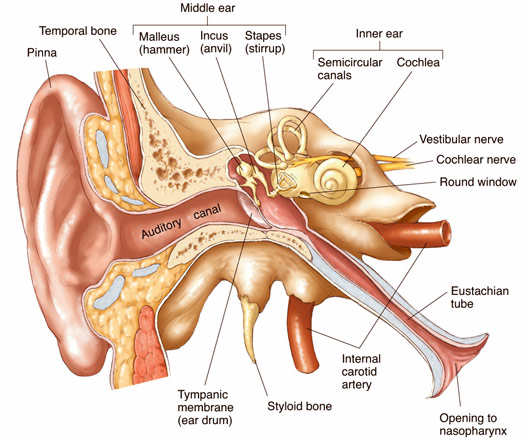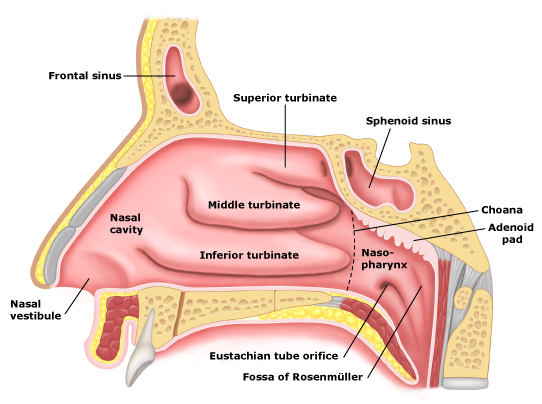About Eustachian tube dysfunction
What is Eustachian Tube Dysfunction (ETD)?
The Eustachian tube (ET) connects the middle ear (behind the eardrum) to the back of the nose and allows pressure to equalise between the ear and the outside world. It is a tube made of muscle and cartilage that is normally closed at rest but opens during yawning and swallowing. There are several ways in which the ET may not work properly:
1. It might not open when it is meant to (dilatory Eustachian tube dysfunction/ETD). Among other reasons, this may be because the lining of the ET is swollen following a cold, the muscles that open it don’t work well, or the opening is blocked by e.g. enlarged adenoids.
2. It may work OK most of the time but not work well at extremes of pressure, e.g. flying, scuba diving, or even going down a steep hill in a car. This is called baro-induced ETD.
3. It may be open when it is meant to be closed (patulous ETD). This may mean that body sounds travel up the ET (e.g. pulse, voice, breathing)
There is a lot of overlap between the symptoms of these different subtypes of ETD, but many people experience a feeling of blockage or pressure in the ears. The hearing may be affected, especially if there is a build-up of mucus behind the ear drum (glue ear) because of the blocked ET. Examination of the ear (otoscopy) and ET opening (flexible nasendoscopy), pressure tests (tympanometry) of the eardrum, and sometimes scans may help decide what the problem is and can help to guide treatment. You can find more information about ETD here.
Treatments for Eustachian tube dysfunction
Smoking stops the tiny hairs in the lining of the nose and ET from working, causing a buildup of mucus and some swelling. Stopping smoking can help with ETD symptoms, although the effect may take several months (until the swelling subsides and the hairs start working again).
Often, ETD problems (especially dilatory ETD) come on after a cold, flu or sinusitis, and are short-lived. This will either settle down by itself, and you may help it along by performing some ETD exercises and/or using the Otovent device. Your doctor may also give you a course of steroid nose spray, some salt water spray (such as Sterimar), and/or some decongestant nose drops.
Allergy also causes mucus build-up and swelling around the ET, so if there are other allergic symptoms (itchy nose/eyes, sneezing, a tendency to allergy in the family), antihistamines may help in addition to the sprays and drops above.
Occasionally, if symptoms persist for months, and medicines don’t work, then surgery for Eustachian tube dysfunction may help. Traditionally, this has included options such as removing the adenoids, treating nose problems (like polyps, chronic sinusitis or a bent nasal septum), or putting in grommets.
More recently, successful treatment has been reported with Eustachian tube dilation, or Balloon Eustachian Tuboplasty, where the ET that isn’t opening properly is stretched with a balloon passed in through the nose.
For patulous ETD, different types of medicines and nasal spray may be effective, but the results are a bit unpredictable. The surgical options involve: plumping up the ET opening, either with an injection of filler or surgical implantation of some fat or cartilage; stiffening up the eardrum with some cartilage so it doesn’t move so much with the open/patulous ET; or inserting a grommet.
As with many things in life, nothing is simple with ETD, and there are a whole variety of other conditions that may mimic the symptoms. These include jaw joint (TMJ) problems, other issues with the hearing bones (e.g. otosclerosis), inner ear problems (e.g. cochlear hydrops, superior semi-circular canal dehiscence). Sometimes, patients have a feeling of blockage or pressure, but all the examinations and tests are normal, which may mean the problem is nothing to do with the ear but is a form of sensitisation or even a migraine phenomenon, and migraine treatments may be worth trying.


